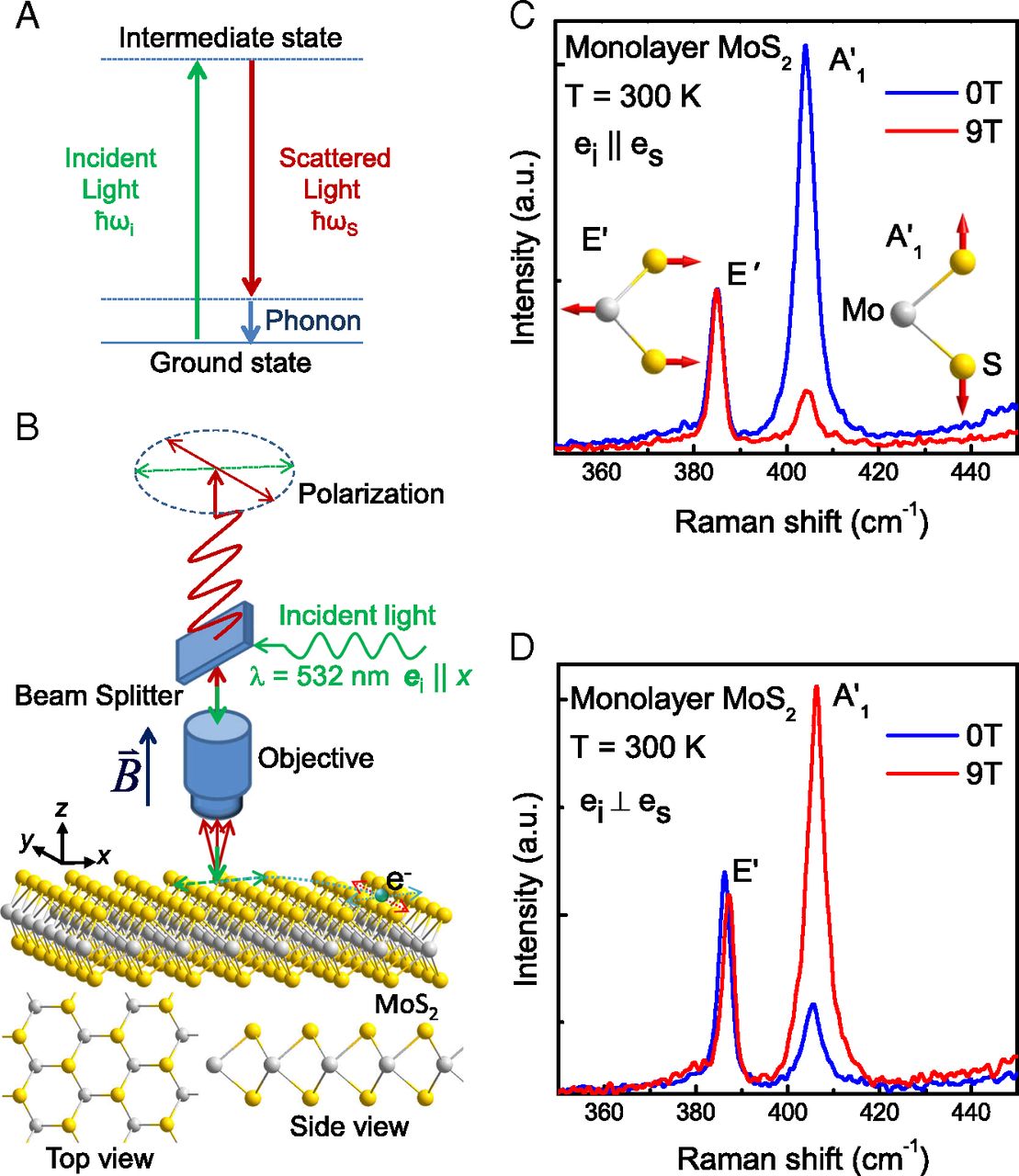New-publication- Giant magneto-optical Raman effect in a layered transition metal compound

Schematic of (A) a three-step Raman excitation process and (B) experimental configuration.
Raman spectra of monolayer MoS2 of (C) parallel and (D) perpendicular polarization
configurations between incident and scattered light with and without the magnetic
field (0 and 9 tesla). The vibrational patterns of the corresponding E and A Raman
modes are illustrated in the insets.
Raman scattering is a powerful technique to probe optical phonons in solids. It usually involves electron-mediated process, involving photon, electron and phonon interactions. In principle, manipulating electrons, for instance by applying a magnetic field, should affect Raman phonon intensity, yet there is no direct experimental measurement. Recently Prof. Ward Plummer and Prof. Jiandi Zhang, through a collaboration with Prof. Qingming Zhang’ s group at Renmin University in Beijing, China, reported the first realization of the idea in a prototype material, MoS2. From monolayer and bilayer to bulk MoS2 they observed a dramatic modification of Raman phonon intensity induced by magnetic field. Such a giant magneto-optical effect appearing at a monoatomic layer level and its technological implications for magnetic-optical devices should inspire a new branch of inelastic light scattering. For detail, read the related published article in Proceedings of the National Academy of Sciences. Read more.